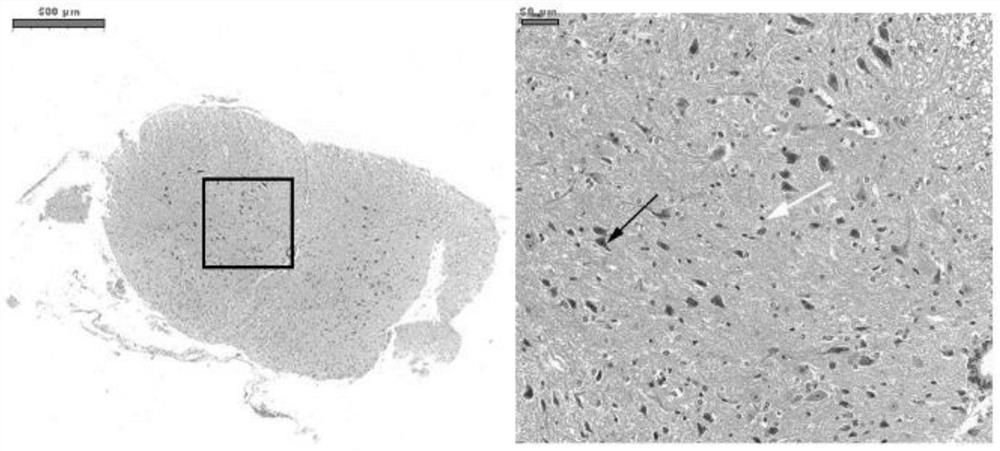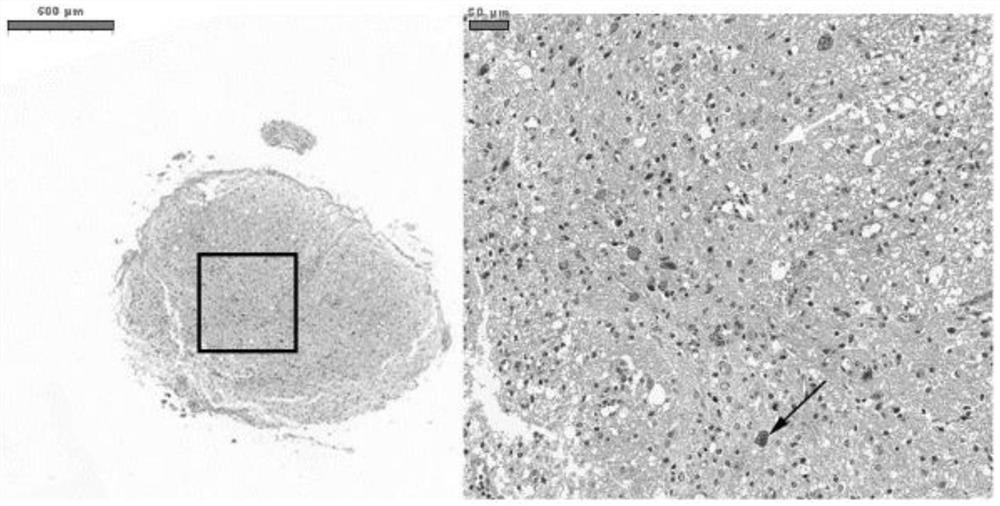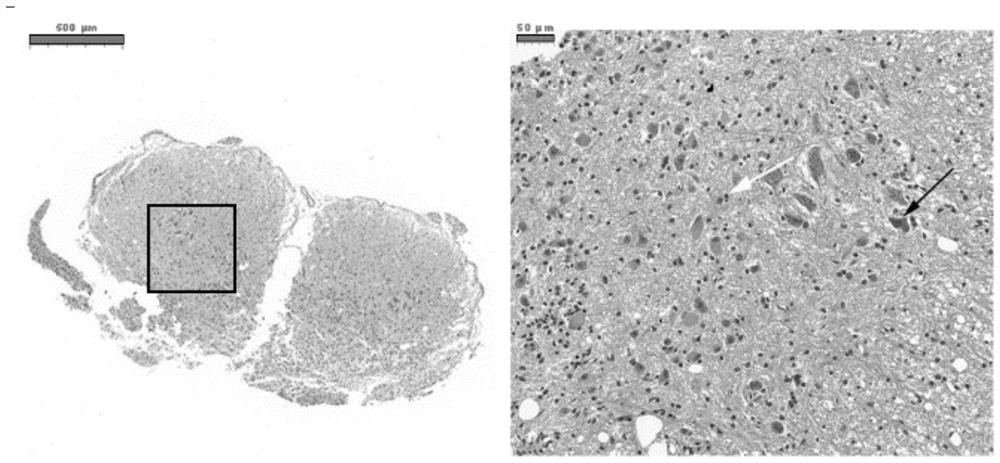Gene marker for diagnosing spinal cord injury and screening spinal cord injury treatment drugs
A technology for diagnosing spinal cord injury, applied in disease diagnosis, microbial determination/examination, biological testing, etc., can solve the problems of heavy psychological and economic burden of patients and their families, high disability rate of spinal cord injury, and high medical expenses
- Summary
- Abstract
- Description
- Claims
- Application Information
AI Technical Summary
Problems solved by technology
Method used
Image
Examples
Embodiment 1
[0034] Genome-wide eukaryotic RNA sequencing of traumatic spinal cord injury tissue using next-generation high-throughput sequencing technology.
[0035] 1. Model making
[0036] C57BL / 6 mice were modeled with spinal cord impact injury using the modified Allen's method: the experimental mice were anesthetized by intraperitoneal injection of pentobarbital (75 mg / kg), the T10 spinous process was the central operation area, and the T10 spinous process and lamina were removed to expose the hard spine Membrane, spinal cord injury (10 g, 6.25 mm) was induced using the MASCIS spinal cord injury impactor. After the operation, the wound was sutured layer by layer.
[0037] Signs of successful impact are: spinal cord tissue edema, hemorrhage, complete swelling of the dura mater, purple-red; mice have tail-wagging reflex, lower limbs retract and flutter, and flaccid paralysis.
[0038] In the sham operation group, only the spinal cord was exposed and the wound was sutured layer by laye...
Embodiment 2
[0062] The spinal cord tissues of the experimental animals in the 3 groups were respectively taken and stained with HE. The results are shown in Figure 1 ~ Figure 4 .
[0063] The results showed that in the spinal cord injury group, the structure of the spinal cord was disordered, the boundary between gray and white matter was unclear, the number of neurons was reduced, local hemorrhage, and inflammatory cell infiltration, etc., while the above changes were significantly alleviated in the hyperbaric oxygen treatment group, and the histopathological score was significantly reduced (the higher the score, It indicates that the damage is more serious).
Embodiment 3
[0065] Histopathological evaluation of injured spinal cord
[0066] At different time points after operation, the BMS scores of the hindlimb motor function of the three groups of experimental animals were respectively scored (0 points, completely paralyzed; 9 points, completely normal), suggesting that the BMS scores of the hyperbaric oxygen therapy group at each time point were significantly higher than those of the spinal cord injury group , confirmed that hyperbaric oxygen therapy can significantly promote the recovery of limb function. see results Figure 5 .
PUM
 Login to View More
Login to View More Abstract
Description
Claims
Application Information
 Login to View More
Login to View More - R&D
- Intellectual Property
- Life Sciences
- Materials
- Tech Scout
- Unparalleled Data Quality
- Higher Quality Content
- 60% Fewer Hallucinations
Browse by: Latest US Patents, China's latest patents, Technical Efficacy Thesaurus, Application Domain, Technology Topic, Popular Technical Reports.
© 2025 PatSnap. All rights reserved.Legal|Privacy policy|Modern Slavery Act Transparency Statement|Sitemap|About US| Contact US: help@patsnap.com



